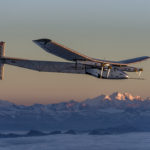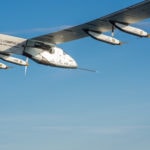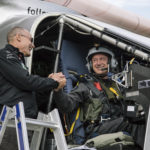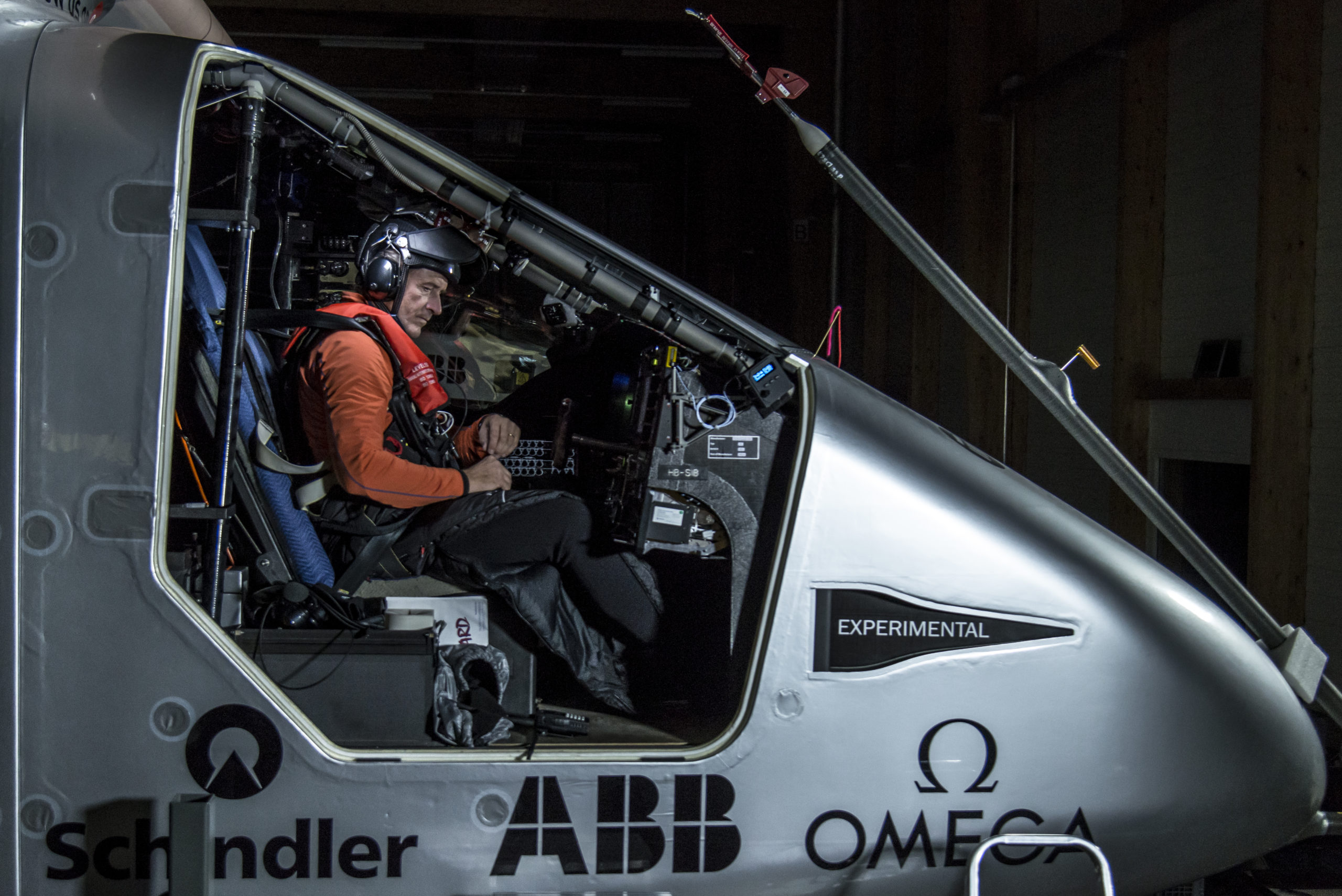Round-The-World Solar Flight: Q&A With Solar Impulse 2
Share
Bertrand Piccard and André Borschberg will attempt to make aviation history this March as they set to take off on the first round-the-world solar-powered flight. The aircraft, Solar Impulse 2 (Si2), is fueled completely by sunlight and will begin its journey in Abu Dhabi.
We spoke to the team behind the project about the implications the technology may have for commercial aviation, and discussed the challenges co-pilots Bertrand and André may face on their five-month journey.
Was there a particular appeal to Abu Dhabi as a takeoff and reassembly location for Solar Impulse 2 (Si2)?
Abu Dhabi makes a natural host city for Solar Impulse as they are committed to exploring new horizons in the fields of energy and innovation. The President of the UAE has proclaimed 2015 as the Year of Innovation, jumpstarting a sustained effort to cultivate innovation as a cornerstone of the country’s long-term economic strength.
Masdar, Abu Dhabi’s renewable energy company and host partner of Solar Impulse, is committed to advancing clean technology and encouraging innovation to ensure a sustainable, cleaner future. Master is a leader in developing some of the most sophisticated renewable energy projects in the world.
What kind of team is required to for the Si2 project?
When Solar Impulse was initiated in 2003, the aviation industry thought that a round-the-world, solar-powered flight was not feasible. Therefore co-founders Bertrand Piccard and André Borschberg needed to build a team with a positive outlook. It is only through its wide partnership network that Solar Impulse has been able to develop the technologies for this challenge.To put this in context, we work with over 80 partner companies and have a team of over 150 experts in their fields including:
Meteorologists: Who check the weather conditions and provide regular forecasts throughout the mission
Mathematicians: Who calculate the optimal route and consider the latest weather conditions
Air Traffic Controllers (ATC): To summarize geopolitical and logistical constraints such as conflict zones or densely populated areas
Planning Engineers: Who summarize the information gathered by the team
Ground Crew: To follow the aircraft on the route
Communication Team: Who ensures the Solar Impulse messages and adventures are shared effectively with the outside world
Event Team: To organize events during the round-the-world tour for partners, press and schools.
Does the technology used for Solar Impulse 2 have any implications for the commercial aircraft industry?
Si2 proves the concept that an airplane can fly day and night with no fuel around the world. Although our goal is not to build solar-powered airplanes in big numbers and sell them commercially, we see several integrations of the technology that we use. Flight training schools and aero clubs can begin to use electric and hybrid aircraft, which are more efficient and reduce local noise compared to the current small planes. At high altitude, autonomous solar planes can begin to replace satellites as they provide Wi-Fi and GSM connections to a broader area.
But the aerospace industry really only accounts for approximately 3 percent of global fuel consumption, so a large part of our focus is on how these clean technologies can make an impact on the ground. For example, the high-density foam insulation that surrounds the cockpit and the batteries, developed by Bayer Material Science, has the ideal properties to be used in refrigerator insulation. The innovations in lightweight materials, energy-dense batteries and efficient motors have huge possibilities of application. Industries need to take the initiative and adopt them into their products and systems.
In the last issue of APEX Experience we explored how far your favorite TV show would take you on a plane. Will Bertrand and André have access to in-flight entertainment? How will they keep their minds occupied?
The pilots face many challenges during a flight so there is very little time for in-flight entertainment. Listening to music, writing impressions and ideas and photographing great moments is what André Borschberg does. Bertrand Piccard says that when he made his round-the-world balloon flight, there was so much to do for navigation, piloting, contacting air traffic controllers and management of life onboard that he did not even open the books that he had taken with him. Only some music to brighten the overview of deserts and oceans.
He adds that after 14 years of preparation, he is not embarking with Solar Impulse to read a book or play video games onboard. In fact, they begin each day 3,000 meters below sea level and climb 8,500 meters through the day, to the height of Mount Everest, before descending again during the night.
What will the environment be like onboard? How do the pilots train?
In an unpressurised cockpit, with temperatures varying between +40°C and -20°C. The pilots need to use survival techniques and be trained as endurance athletes for the 120 hour flight. Breathing techniques used in yoga help the pilots to raise their core body temperature without demanding too much oxygen. Working with Sanjeev Bhanot of Antastha Yoga, André has also been able to design a yoga routine that will maintain blood circulation and muscle activity during the flights.
Using his training as a medical doctor, Bertrand exercises self-hypnosis techniques to relax the mind and quickly enter a deep sleep. This is particularly useful as the pilots only have rest breaks of 20 minutes at a time. Without an auto-pilot, Solar Impulse relies on an innovative Monitoring and Alerting System to alert the pilot to any changes in flight parameters during these rest periods.
What kind of connectivity will the pilots have in the air? Will they have access to social media?
The pilots wanted to be as connected to people as possible from the cockpit. They will be hosting Google Hangouts to give a unique view of the pilot’s seat, and at other times you will be able to see GoPro footage streaming live to the website. Education is a key aim of Solar Impulse and the Google Hangouts will allow the pilots to connect directly with classrooms around the world. During each stage, both the flying pilot and the non-flying pilot will be active on Twitter, which will be a great opportunity to ask questions and send your comments. The pilots will also have iPods with them, so selecting the playlist for each journey will be a task for the whole community to join in on!
Education is a key aim of Solar Impulse and the Google Hangouts will allow the pilots to connect directly with classrooms around the world.
Where can we follow their journey?
Using the Swisscom Sat Com System, Si2 is able to stream the aircraft telemetry to the live website. This allows followers to view the position, trajectory, airspeed, battery status and motor power of Solar Impulse during flight. Connecting with @solarimpulse on Twitter will provide followers with regular updates from the flight team and the Mission Control Centre. The team can also be followed on Facebook, Google+ and Instagram. The Solar Impulse YouTube channel also hosts a range of content that explains the project and gives insider insights to life with the Solar Impulse team. Both pilots have personal Twitter, Facebook and Google+ channels where you can find exclusive content about their activities during the first round-the-world solar flight.
What’s next after this journey’s over?
The adventure will not end as Solar Impulse lands back in Abu Dhabi. This year we’re building up momentum for clean technologies. In particular, we look to the United Nations Climate Change Conference (COP 21) in Paris this December, where world leaders will discuss the importance of taking action on climate change. Everyone that has followed Solar Impulse around the world, including our supporters, patrons and partners, can continue to promote our message and pioneering spirit, and using clean technologies to create a positive change in the world.







